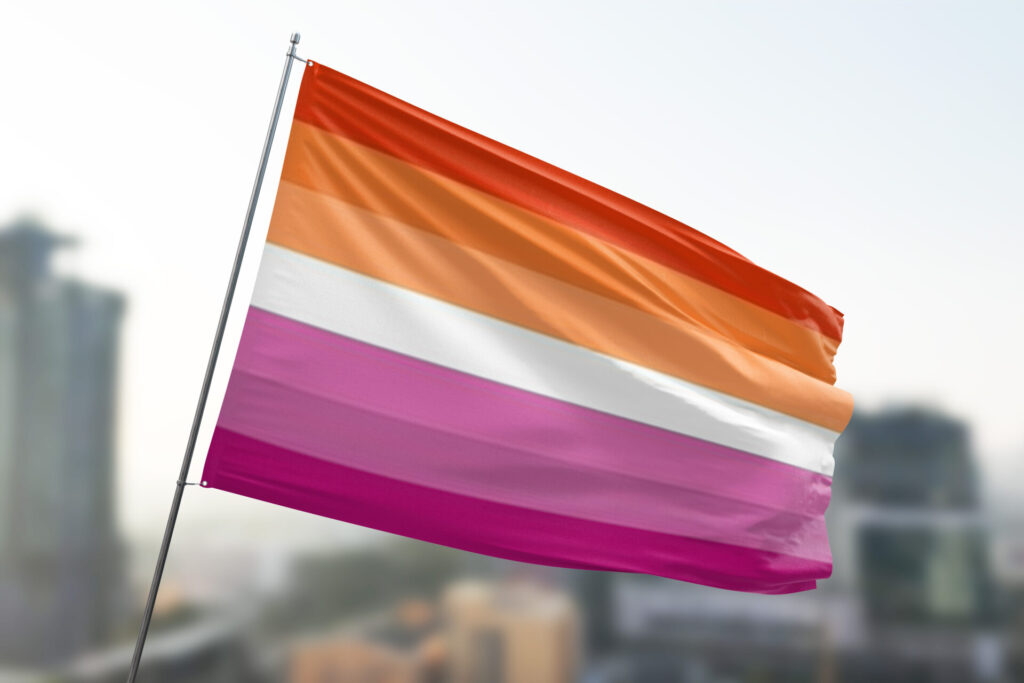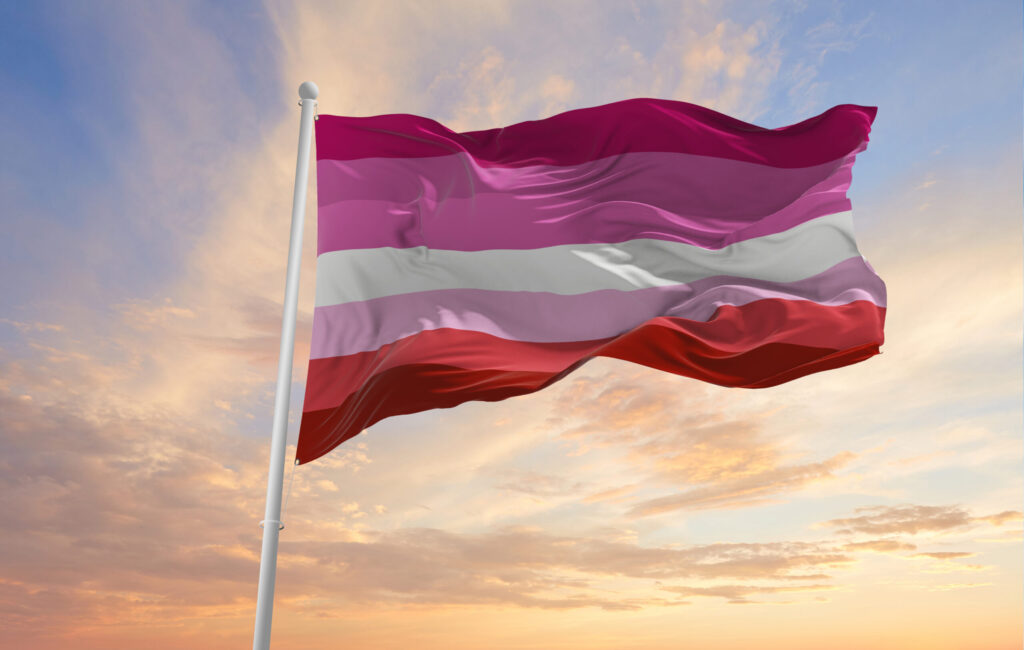Introduction to the History of Pride Flags
The vibrant spectrum of pride flags has long been a powerful symbol of identity and resilience within the LGBTQ+ community. Each flag tells a unique story, representing various identities and experiences. Among these banners is the Lesbian Flag, a striking emblem that carries deep meaning for many.
It serves as both an expression of love and a call for acceptance. But how did this iconic flag come to be? What inspired its creation, and what does it signify today? Join us on a journey from concept to creation as we explore the fascinating history behind the Lesbian Flag, highlighting its significance in contemporary society.
The Importance of Representation for the LGBTQ+ Community
Representation matters deeply for the LGBTQ+ community. It fosters a sense of belonging and identity. When individuals see themselves reflected in media, art, and symbols, it validates their experiences.
Visibility can also challenge stereotypes and promote understanding. Authentic depictions help dismantle misconceptions about diverse sexual orientations and gender identities. This recognition encourages empathy among those outside the community.
Strong representation empowers future generations. Young LGBTQ+ people need to know they are not alone; every visible role model enhances their courage to embrace who they are. A flag symbolizes pride but also serves as a beacon of hope. It reminds everyone that love knows no bounds, fostering unity within diversity across cultures and societies alike.
As conversations around inclusion continue to evolve, visibility remains crucial in advocating for rights and breaking barriers within society at large.

Early Attempts at Creating a Lesbian Flag
Before the current lesbian flag came into existence, various symbols emerged to represent the community. The quest for a distinct banner began as early as the 1970s, inspired by a growing need for visibility.
One of the earliest attempts featured shades of pink and lavender. These colors symbolized femininity and love but were not universally embraced. Designs varied widely across different groups, leading to confusion rather than unity.
As time passed, these initial designs laid the groundwork for more cohesive efforts. Activists recognized that representation mattered deeply within LGBTQ+ spaces. Each attempt reflected broader societal changes while striving to capture unique experiences.
Despite their imperfections, these flags held significance in local pride events and gatherings. They fostered discussions about identity and belonging long before the modern iteration took shape.
The Birth of the Lesbian Flag: Creator and Inspiration
The Lesbian Flag emerged from the vibrant tapestry of LGBTQ+ culture in 2010. Its creation is attributed to a passionate artist named Monica Helms. She sought to craft a symbol that resonated deeply with the lesbian community.
Helms drew inspiration from her own experiences and the need for visibility. The design features shades of pink, purple, and orange, each color representing unique aspects of identity and love within the community. The original flag included eight stripes but was later simplified to seven.
This reduction made it more accessible while still maintaining its essence. Each stripe tells a story—a narrative woven into the fabric that celebrates diversity among lesbians.
Helms wanted the flag to be recognizable regardless of how it was displayed, reinforcing themes of inclusivity and resilience. It’s not just about pride; it’s about finding strength in one’s identity amidst life’s challenges.
Evolution and Acceptance of the Lesbian Flag
The evolution of the Lesbian Flag reflects a journey of acceptance within both the LGBTQ+ community and society at large. Initially, there was resistance to adopting a singular symbol for lesbians, as many felt overlooked in broader pride movements.
As awareness grew, so did appreciation for distinct identities. The flag’s brighter colors signified hope and empowerment. Each shade spoke volumes about love and unity among women who identify as part of the lesbian community.
Over time, visibility increased through social media platforms. Many began embracing it not just as a token but as an essential representation of their identity. Events celebrating diversity often feature the flag prominently.
Today, it stands proudly alongside other pride flags at parades and gatherings worldwide. Its acceptance marks significant progress towards inclusivity while encouraging dialogue about issues that still matter deeply within the community.
Controversies Surrounding the Flag
The Lesbian Flag has sparked discussions and debates within the LGBTQ+ community. Some argue about its symbolism, questioning whether it truly represents all lesbians or excludes certain identities.
There have been calls for more inclusivity in design elements. Critics feel that variations of the flag might better represent diverse experiences within the lesbian community, including those of transgender women and non-binary individuals. Some believe that color choices convey specific meanings that may not resonate with everyone. Conflicting interpretations can lead to divisions among supporters.
Social media often amplifies these disagreements, making them visible to a wider audience. This visibility can sometimes escalate tensions rather than foster understanding. While controversies exist, they reflect broader conversations about identity and representation in an evolving society. Engaging with these conflicts is essential for growth within the movement itself.
Impact and Significance of the Lesbian Flag in Modern-Day
The Lesbian Flag stands as a powerful symbol within the LGBTQ+ community today. It represents visibility, pride, and unity among lesbians and queer women alike.
In various settings—from Pride parades to social media—the flag serves as an emblem of resilience. Its vibrant colors resonate with those who seek representation in a world that often overlooks them. The flag fosters a sense of belonging. It invites individuals to embrace their identities confidently. This communal spirit is vital for creating safe spaces where everyone can express themselves freely.
Artistic interpretations have also emerged, blending traditional elements with modern designs. This evolution reflects changing societal attitudes toward gender and sexuality.
As discussions around inclusivity grow louder, the Lesbian Flag remains central to advocacy efforts. Its presence is not just about celebration but also about raising awareness regarding ongoing struggles faced by the lesbian community worldwide.
Conclusion
The journey of the Lesbian Flag reflects a broader narrative within the LGBTQ+ community. It showcases the desire for representation, recognition, and pride. The flag not only symbolizes identity but also serves as a powerful reminder of progress and unity.
As society evolves, so does our understanding of gender and sexuality. The Lesbian Flag stands as an emblem of hope for many individuals seeking acceptance in their personal lives. Its bold colors tell stories—stories of struggle, celebration, and resilience.
By embracing this symbol, we acknowledge the diversity within lesbian identities while fostering inclusivity across all spectrums of sexual orientation. As more people rally around it during Pride events or everyday life, its significance only grows stronger.
The legacy behind the Lesbian Flag is one that continues to inspire dialogue about love and equality. It invites everyone to partake in an ongoing conversation about what it means to belong—a theme that resonates far beyond just one flag or movement.


